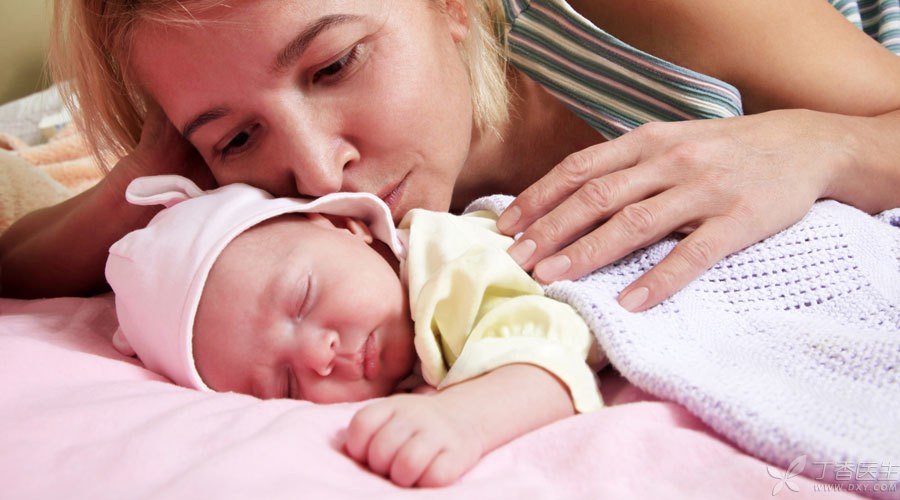
The baby has been living alone in the new world for a month. Perhaps you will find that he seems to only eat milk, sleep or excrete every day, but in fact, the function of various organs in his whole body is quietly changing from immaturity to initial construction and consolidation, with more actions and reactions. Let’s take a look at what changes have taken place in the growth and development of the one-month-old baby.
Normal range of growth and development
Normal length and weight range of 1-month-old infants
| girl baby | 47.9~59.9 | 2.98~6.05 |
The data are from the document guide of the Ministry of Health of China < < China’s Reference Standards for Growth and Development of Children under 7 Years Old > >
Special changes in the body
1. Baby alopecia
Careful mothers may find that When the baby was born, the thin and soft hair on his head soon began to fall off. The baby’s pillow and hat were covered with baby’s small hair. If the baby is lying in bed and often rubs the back of the head, there may be small pieces of [pillow baldness], but don’t worry, this is a normal phenomenon, the baby falls off is fetal hair, and new hair will grow in a few months.
2. The skin is blue and purple
Many novice parents find that their baby’s skin is blue and purple. They are very worried about the child’s lack of oxygen or other problems and rush to see a doctor. However, in most cases, it is a false alarm, and parents need to learn to judge which conditions are normal.
① Local skin cyanosis
Children’s hands and feet will feel colder than other parts. Sometimes some parts of the skin will be ruddy. Some parts of the phenomenon of cyanosis. This is because the newborn baby skin and limb end of the blood circulation function is not perfect, cold will quickly contract. This local cyanosis will quickly recover ruddy after keeping warm or activities. This phenomenon will disappear after the child is older.
② The skin of the whole body is blue and purple
When crying violently or holding one’s breath, cyanosis will occur all over the body. This is caused by the imperfect development of the heart and lung function of the baby within 3 years old. If it is only temporary, the phenomenon that the baby will fade away after being quiet, parents need not worry about it.
However, it is worth noting that if the child suffers from persistent cyanosis throughout his body in a quiet state, he should ask a doctor for examination and treatment as soon as possible.
3. Abscission of umbilical cord
Most babies will dry and fall off about 10-20 days after birth. Occasionally, after the umbilical cord falls off, there will be a little small wound with or without a small amount of secretions. In this case, as long as the part is kept clean and dry, it will naturally heal within two weeks.
Tips for Baby Umbilical Cord Care:
1. When bathing the baby before the umbilical cord falls off, avoid wetting the umbilical cord. You can use a bath or waterproof patch to dry the umbilical cord if you touch water carelessly and dry it with dry cotton swabs to keep the umbilical cord dry.
2. When wearing diapers, the front section of diapers should be placed below the navel to avoid inflammation caused by rubbing and touching urine on the navel. A breathable environment is also beneficial to the healing and falling off of the navel.
3. Under normal circumstances, the umbilical cord will have a small amount of liquid secretions before falling off, which need to be cleaned every day. After bathing, the umbilical cord can be sucked dry with clean dry cotton swabs. Under no special circumstances, iodophor and alcohol disinfection are not required.
4. Mothers should clean and dry their hands before nursing the baby’s umbilical cord to prevent contamination of the baby’s umbilical cord wound.

One-month-old infant growth and development assessment tool
There are too many characteristics of the baby’s growth and development. What if Baoma is dizzy?
The following small editor will pass on my private secrets to you-the one-month infant growth and development assessment scale developed by the American Academy of Pediatrics.
Please read every description in the scale carefully. If a 1-month-old baby has any of the following signs of stunting, he should go to the Children’s Growth and Development Clinic in time.
1-month-old infant growth and development scale
1. Can’t suck, sucking speed is very slow.
2. No response to violent sounds.
3. Do not blink in strong light.
4. The line of sight will not pay attention to the object in front of us and will not move with the moving object in front of us.
5. The limbs seem to be very weak.
6. The limbs look stiff and rarely move.
7. Even if you are not crying or excited, your chin keeps shaking.
It is worth noting that although this scale has high reference value for evaluating the growth and development status of infants aged 0-1 month, there are many phenomena involved in infant development, and this scale can only be used for evaluating the most basic development status.
